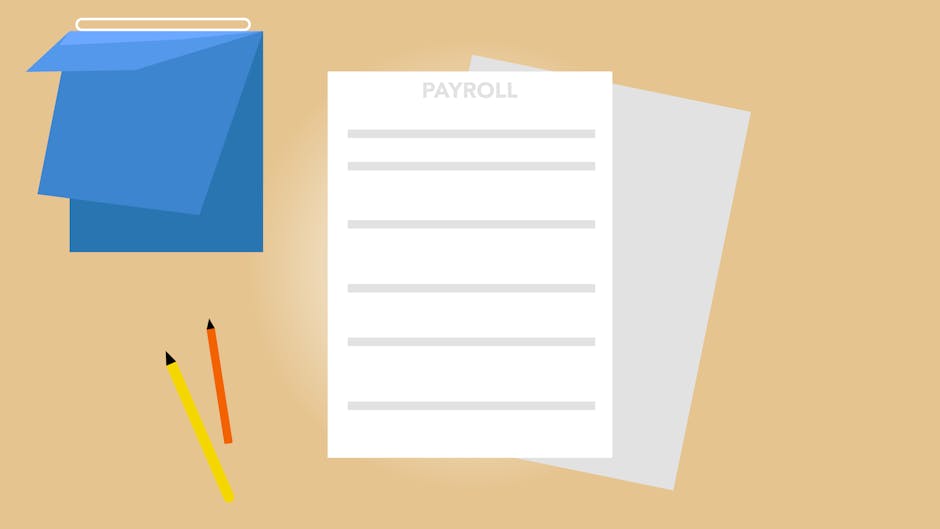
Beginner’s Guide to NET 30 Payment Terms
Understanding NET 30 Payment Terms
NET 30 payment is a common business term that refers to a payment period of 30 days from the invoice date. This means that once an invoice is issued, the buyer has 30 days to pay the seller without incurring any late fees. It’s like giving your customers an interest-free loan for a month.
- Definition: NET 30 payment means full payment is due 30 days after the invoice date.
- Importance: Helps build trust and long-term relationships between businesses.
- Common Usage: Widely used in B2B transactions to accommodate cash flow and payment processing times.
Imagine you’re running a small business. You provide a service, and instead of asking for payment upfront, you give your client 30 days to pay. This flexibility can help you attract new clients and grow your business. But be careful—if payments are late, it can hurt your cash flow.
Amplify Score has years of experience in helping businesses steer payment terms like NET 30. We’ve seen how flexible payment options can benefit both sellers and buyers.

What is NET 30 Payment?
NET 30 payment is a common invoicing term that gives customers 30 days to pay their invoice in full. This term is widely used in business-to-business (B2B) transactions and is essentially a form of trade credit extended to the buyer.
How NET 30 Payment Works
When you see NET 30 on an invoice, it means the buyer has 30 calendar days from the invoice date to make the payment. This period includes weekends and holidays. Here’s a simple example:
- Invoice Date: The date when the invoice is issued.
- Payment Due Date: 30 days from the invoice date.
For instance, if you issue an invoice on April 1, the payment is due by April 30.
NET 30 payment terms act like a short-term, interest-free loan to your customer. This can be a great way to build trust and encourage larger orders, but it also requires you to have enough cash flow to cover your own expenses while waiting for payment.
When Does NET 30 Start?
One of the most important aspects of NET 30 terms is defining when the 30-day countdown begins. Misunderstandings can strain business relationships. The start date can be:
- Invoice Date: The most common start date. The countdown begins the day the invoice is issued.
- Delivery Date: The countdown starts when the goods are delivered.
- Receipt Date: The countdown begins when the buyer receives the invoice.
For example, if you ship products on April 7 and issue the invoice on April 14, the NET 30 period could start on either date, depending on your agreement.
Clear communication is key. Make sure both parties agree on when the NET 30 period starts to avoid any confusion. Most businesses today start the countdown from the receipt date of the invoice, but always state this clearly in your terms.

In summary, NET 30 payment terms can be a powerful tool for managing cash flow and building strong business relationships. However, clear communication and precise terms are crucial to avoid misunderstandings.
Pros and Cons of NET 30 Payment Terms
Advantages for Sellers
Customer Trust and Loyalty: Offering NET 30 payment terms can build trust. It shows you believe your customers will pay. This trust can lead to long-term relationships and repeat business.
Revenue Generation: With NET 30, you may attract more customers. Some buyers prefer longer payment terms. This can increase your sales and grow your revenue.
Standardization: Many industries use NET 30. By adopting it, you align with industry norms. This can simplify your billing processes and make your business look more professional.
Advantages for Buyers
Interest-Free Credit: NET 30 is like getting a short-term, interest-free loan. Buyers get the product or service now and pay later. This can help them manage their finances better.
Liquidity Improvement: Delaying payment by 30 days can improve a buyer’s cash flow. They can use their cash for other needs before paying you.
Financial Planning: Knowing they have 30 days to pay helps buyers plan their budgets. They can align payments with their income cycles, making financial management easier.
Disadvantages for Sellers
Cash Flow Issues: Waiting 30 days for payment can strain your cash flow. This is especially tough for small businesses or startups with limited funds.
Late Payments: Not all customers pay on time. Late payments can disrupt your finances and lead to additional costs for chasing payments.
Bad Debt: There’s always a risk that some buyers won’t pay at all. This can result in bad debt, which impacts your profitability and financial health.
Disadvantages for Buyers
Potential Penalties: If buyers miss the 30-day deadline, they may face late fees or penalties. This can add unexpected costs.
Missed Discounts: Some sellers offer early payment discounts. Buyers who wait the full 30 days miss out on these savings.
Financial Strain: If a buyer’s financial situation changes, they might struggle to pay within 30 days. This can lead to financial strain and affect their creditworthiness.
In the next section, we will explore alternatives to NET 30 payment terms and how they might better suit different business needs.
Alternatives to NET 30 Payment Terms
Not every business finds NET 30 payment terms ideal. Luckily, there are several alternatives to consider, each with its own pros and cons.
Early Payment Discounts
Early payment discounts encourage buyers to pay invoices sooner by offering a small discount. Here are some common options:
2/10 Net 30: If the invoice is paid within 10 days, the buyer gets a 2% discount. Otherwise, the full amount is due in 30 days. This is a popular choice for businesses looking to speed up cash flow.
1/10 Net 30: Similar to 2/10 Net 30 but with a 1% discount for early payment. It’s less enticing but still effective.
3/10 Net 30: Offers a 3% discount if paid within 10 days. This higher discount can be very motivating for buyers to pay early.
Other Payment Terms
Net 15: Payment is due 15 days after the invoice date. This term is shorter than NET 30 and can help improve cash flow quicker.
Net 45: Gives buyers 45 days to pay. This term is longer and might be suitable for industries where longer payment cycles are standard.
Net 60: Extends the payment period to 60 days. This is useful for large businesses that need more time to manage their cash flow.
Net 90: Offers the longest payment period of 90 days. This is generally used for very large transactions or in industries with long sales cycles.
Immediate Payment: Payment is due as soon as the invoice is received. This term ensures the quickest cash flow but might not be feasible for all buyers.
Payment on Delivery: The buyer pays when the goods or services are delivered. This term is often used in retail and other fast-moving industries.
Choosing the right payment terms can depend on your business needs, industry standards, and customer relationships. In the next section, we’ll discuss how to implement NET 30 payment terms effectively.
How to Implement NET 30 Payment Terms
Setting Up Invoices
To successfully implement NET 30 payment terms, start by setting up your invoices correctly. This ensures clarity and avoids misunderstandings.
Invoice Templates: Use a clear and professional template. Include all necessary information such as your business name, address, and contact details.
Payment Terms Section: Clearly state “NET 30” in a dedicated section. This indicates that payment is due 30 days from the invoice date.
Due Date Clarity: Always specify the exact due date. For example, if the invoice date is April 1st, mention that the payment is due by April 30th. This removes any ambiguity.
Communicating Terms to Customers
Clear communication is crucial when offering NET 30 payment terms. Make sure your customers understand the terms before agreeing to them.
Upfront Agreements: Discuss payment terms before finalizing any sale or contract. This can be done during the negotiation phase or included in the initial contract.
Clear Terms: Use simple language to explain the terms. Instead of just saying “NET 30,” explain that it means the payment is due 30 days from the invoice date.
Customer Understanding: Ensure that your customers acknowledge and agree to the terms. This can be done through written confirmation or a signed agreement.
By setting up your invoices properly and communicating clearly with your customers, you can effectively implement NET 30 payment terms. Next, we’ll answer some frequently asked questions about these terms.
Frequently Asked Questions about NET 30 Payment Terms
What is a NET 30 payment?
A NET 30 payment means that the full invoice amount is due within 30 days. This period includes weekends and holidays. It’s like giving your customer a 30-day interest-free loan. For example, if you send an invoice on October 1st, the payment is due by October 31st.
How do I accept NET 30 payments?
To accept NET 30 payments, follow these steps:
- Invoice Setup: Clearly state “NET 30” in the payment terms section of your invoice.
- Agree on Terms: Make sure your customer understands and agrees to the 30-day payment period before you finalize the sale.
- Send the Invoice: Deliver the invoice promptly after providing the goods or services.
- Follow Up: If the payment is late, send reminders or follow up with the customer to ensure you get paid.
What is the NET 30 rate?
The NET 30 rate refers to the standard payment period of 30 days from the invoice date. It does not include any interest or additional charges if paid on time. However, some businesses offer early payment discounts, such as “1/10 net 30.” This means a 1% discount is available if the invoice is paid within 10 days, otherwise, the full amount is due in 30 days. For instance, a $1,000 invoice with “1/10 net 30” terms would allow the customer to pay $990 if paid within 10 days.
By understanding these basics, you can better manage your invoicing and payments, ensuring smoother transactions and better cash flow for your business.
Conclusion
Understanding NET 30 payment terms can significantly impact your business’s cash flow and customer relationships. By offering flexible payment terms like NET 30, you can attract more customers and build stronger business partnerships. However, weigh the pros and cons to determine if it’s the right fit for your financial stability.
At Amplify Score, we offer custom solutions custom to your business needs. Our goal is to help you manage your invoicing and payments efficiently. Whether you’re looking to implement NET 30 terms or explore other payment options like NET 60 or early payment discounts, we have the tools and expertise to support you.
Our flexible payment terms allow you to choose what’s best for your business. By partnering with us, you can focus on growing your business while we handle the complexities of invoicing and payments.
Ready to simplify your invoicing process? Explore our digital solutions on net 30/60/90 terms and see how Amplify Score can help you achieve your business goals today!
